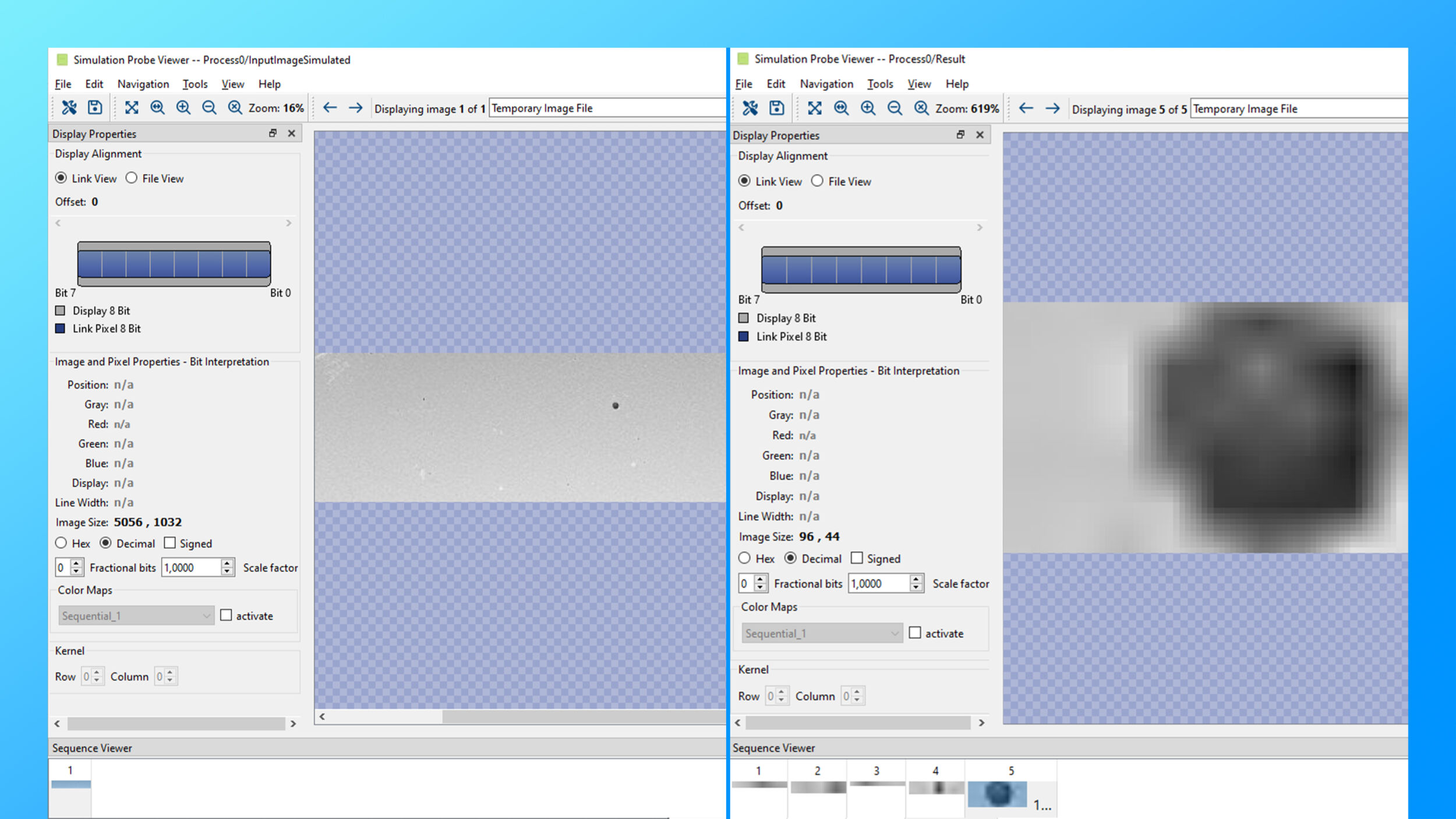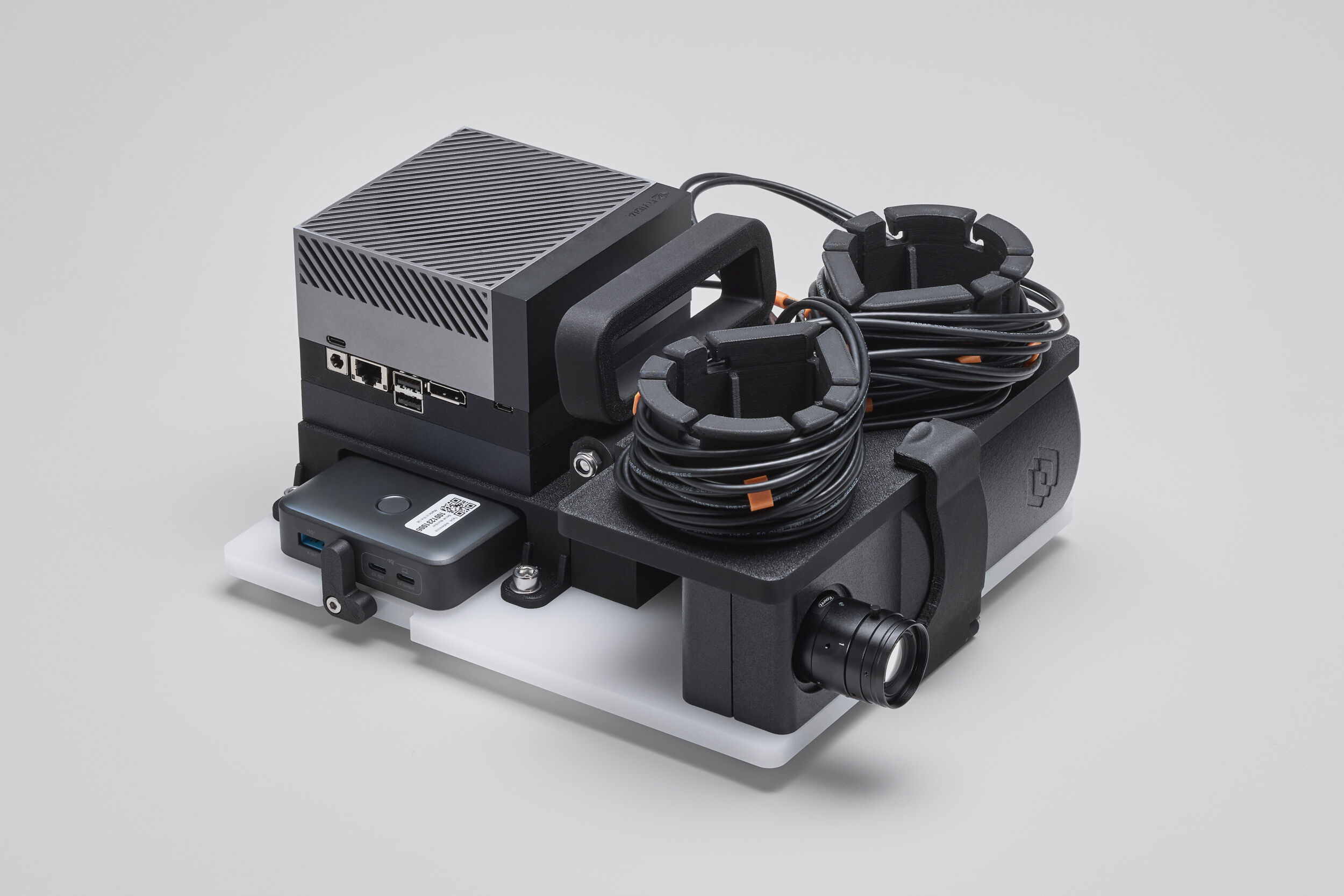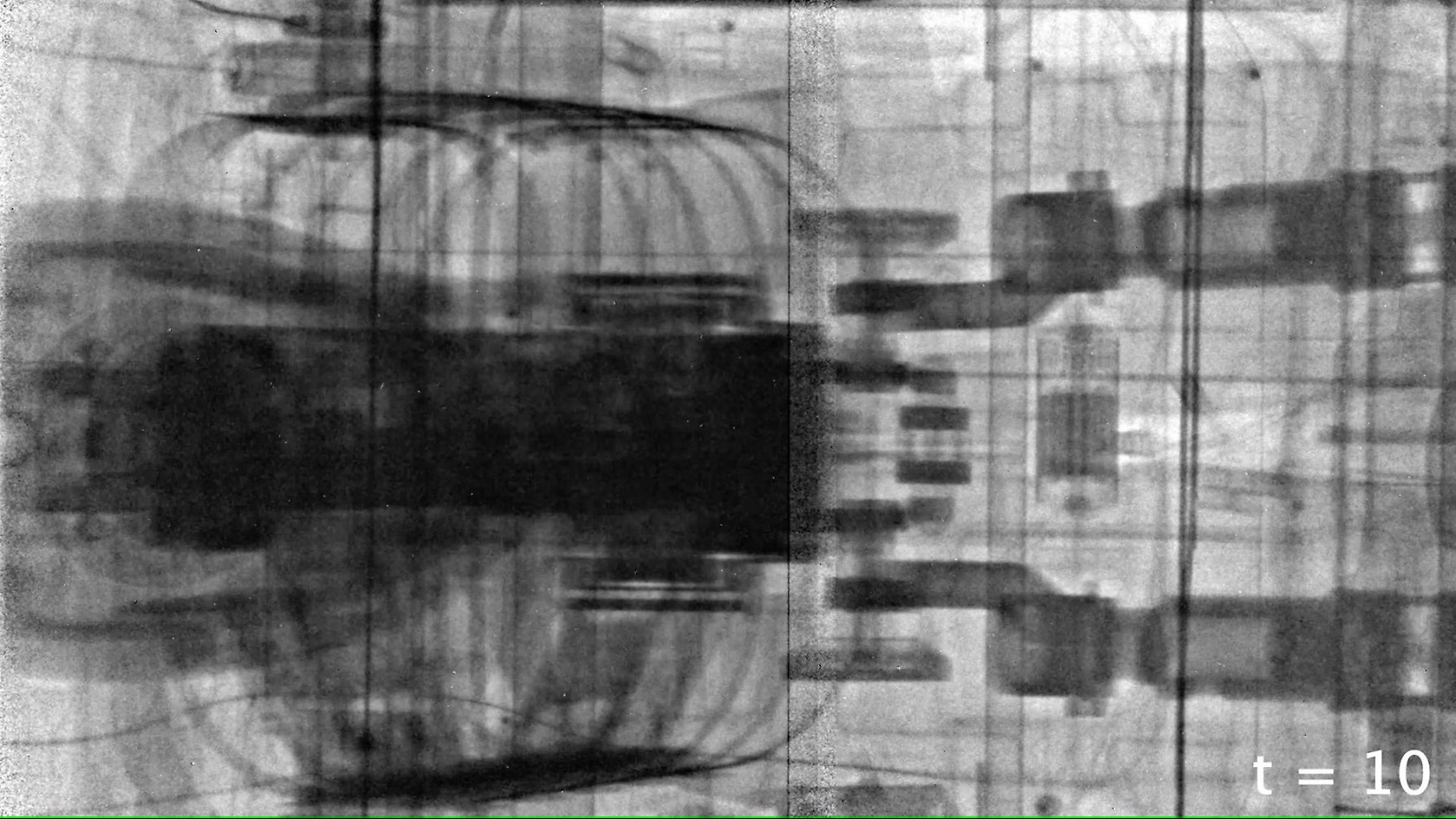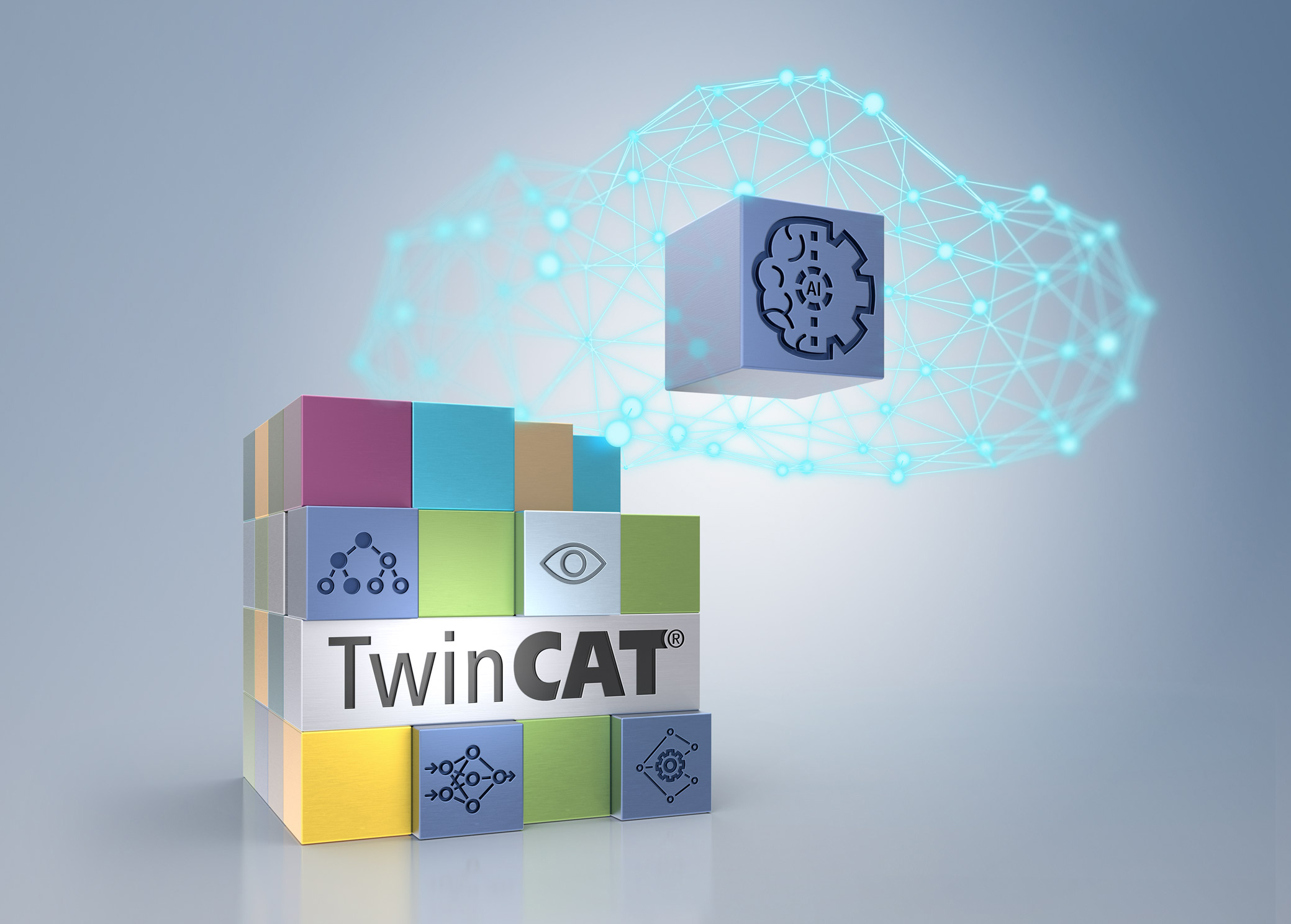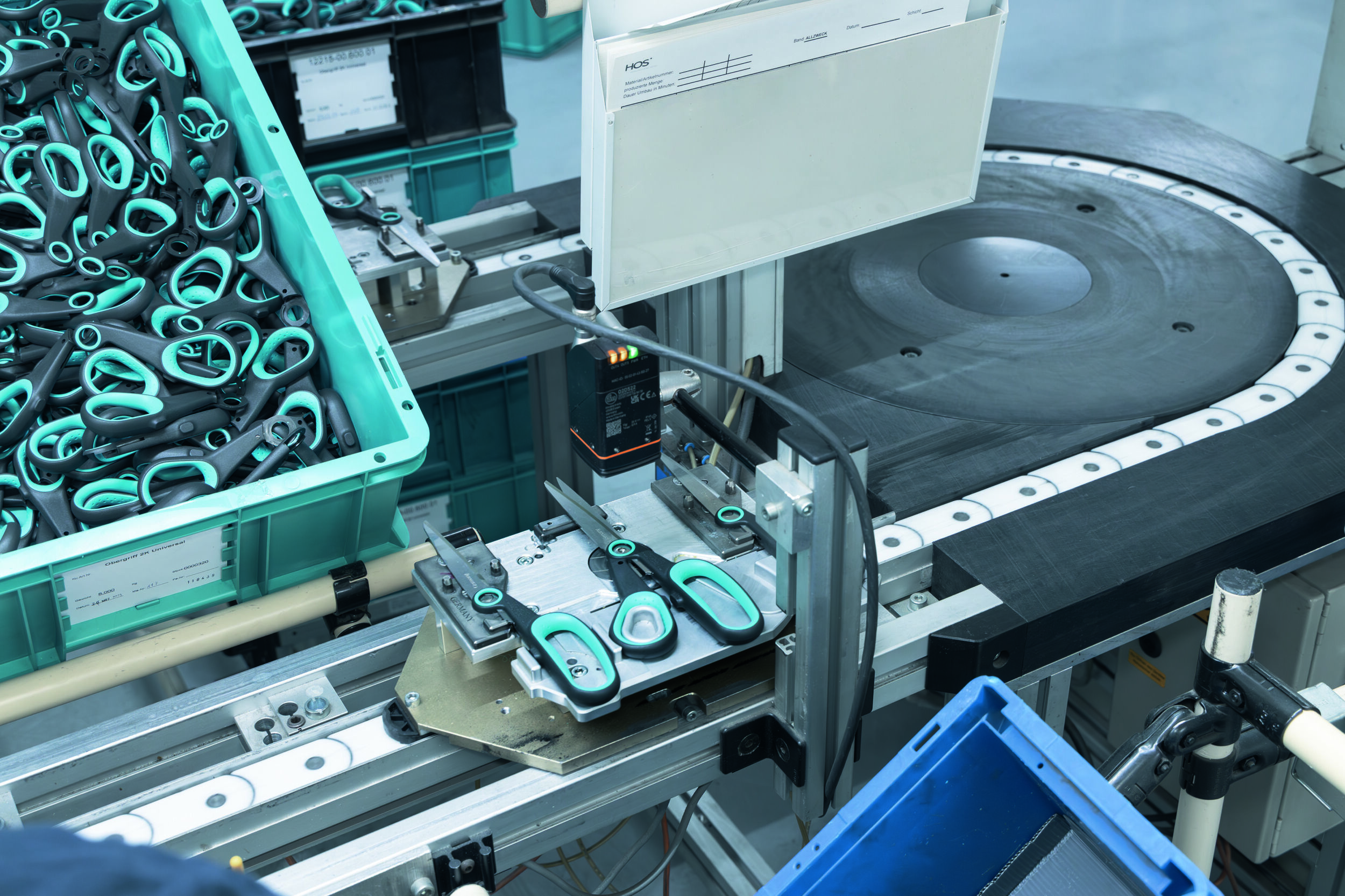
Line confocal sensor technology leverage the principle of chromatic confocal imaging to deliver reliable, accurate, and reproducible dimensional measurements with high resolution and speed. One optical design format for these sensors is called coaxial. Coaxial design uses a single axis where both illumination and detection occur along the same optical path. Light is focused onto the sample through a lens system, and the reflected light is collected by the same lens system and directed towards the detector. This coaxial arrangement eliminates the need for separate illumination and detection paths, simplifying the optical setup. The alignment of illumination and imaging pathways along a common optical axis also ensures optimal focusing and imaging of the target object, while eliminating shadowing effect, minimizing optical aberrations, and maximizing signal fidelity. Combining that with chromatic confocal imaging principles, including spatial filtering and depth discrimination, enables precision scanning of specific focal planes while rejecting out-of-focus light — enhancing resolution and contrast as a result. Coaxial line confocal sensors, such as the Gocator 4000 Series from LMI Technologies, are an excellent option due to their ability to scan simple and complex surface topologies with zero shadowing effect for improved data quality and more accurate measurement results on steep-angled features (e.g., step height of PCB chips), deep grooves (e.g., wafer die factures), and protruding components (e.g., IC wire bonds).

Advantages of Coaxial Design
- High-Speed, High-Resolution Imaging: Coaxial line confocal design delivers high-speed scanning at high X and Z resolutions. This enables the sensor to capture 3D shape and 2D intensity information on intricate details and fine features with stunning clarity. By selectively honing in on specific focal planes and rejecting extraneous light, these systems achieve superior resolution and contrast, facilitating precise object recognition, classification, and measurement in industrial inspection and quality control applications.
- Zero Shadowing Effect: The linear (or vertical) single-axis alignment of the coaxial line confocal sensor’s optics results in the overlap of incident and reflected illumination rays. Compared to triangular optical configurations, coaxial (or brightfield) illumination eliminates any shadowing effect particularly when measuring targets with steep-angled features (e.g., step height of PCB chips), deep grooves (e.g., wafer die factures), and protruding components (e.g., IC wire bonds).
- Enhanced Depth Perception: Depth perception is a critical aspect of machine vision, particularly in scenarios where objects exhibit complex three-dimensional structures or surface topographies. Coaxial design excels in providing accurate depth information by virtue of its confocal microscopy principles, allowing the sensor to discern subtle height variations, surface roughness, groove depth, and dimensional discrepancies with a high level of precision.
- Outstanding Angular Range: Coaxial optics are able to deliver outstanding angular range (e.g., max slope angle up to +/-85°) for excellent performance on highly specular (e.g., machined-metal) and curved surfaces (e.g., chamfer of cell phone display glass).
- Maximum Scanning Versatility: Coaxial optical design gives line confocal sensors an added level of scanning versatility, allowing these devices to accurately scan any material type or part shape including OLED and glass displays, tiny solder bumps on semiconductor BGAs, transparent glue path applications in wearable consumer electronics assemblies (e.g., smart watches), and shiny machined-metal cell phone housings.

Industry Applications
Coaxial line confocal sensors are utilized for automated inspection, defect detection, and metrology of components, assemblies, and surfaces in a number of manufacturing processes. From detecting micro-defects in semiconductor wafers to inspecting surface finish in automotive parts, these systems ensure product quality and compliance reliably meet tight manufacturing tolerances. In electronics manufacturing and semiconductor fabrication, where miniaturized components and intricate patterns are prevalent, coaxial line confocal sensors deliver high-resolution imaging and metrology of circuit boards, microchips, and electronic assemblies. This capability is instrumental in ensuring the integrity and reliability of electronic devices in various applications, from consumer electronics (CE) to aerospace systems. In the medical device industry, precision and reliability are paramount to ensuring the safety and efficacy of diagnostic instruments, implants, and medical devices. Coaxial line confocal sensors can perform detailed inspection and metrology of medical components, such as implants, catheters, and surgical instruments, facilitating adherence to strict regulatory standards and quality assurance protocols.
What is ‚Smart‘ Coaxial
Line Confocal?
In contrast to standard coaxial line confocal sensor technology, smart coaxial line confocal sensors like the Gocator 4000 Series are built on an all-in-one sensor design architecture that includes features such as an easy-to-use web-based interface with built-in measurement tools and HMI-building and deployment capability, native I/O connectivity, and the option for sensor acceleration using an embedded acceleration device or PC. In general, this ´smart´ approach minimizes external hardware such as controllers, eliminates the need to invest in 3rd party software, and delivers a superior overall user experience.
IIoT-enabled Software Platform
The Gocator 4000 Series of smart 3D coaxial line confocal sensors come with GoPxL, the company’s latest IIoT-enabled software platform for creating end-to-end, web-based inline measurement and inspection solutions deployed on Gocator 3D Smart Sensors. Vision engineers can use the platform to solve a wide range of industrial inspection tasks leveraging a combination of on-sensor measurement filters and tools running on Gocator’s laser, snapshot, and line confocal sensors. The embedded software platform even includes a GoHMI Designer application for building custom user interfaces that report sensor outputs to an end user and visualizes scan data. The custom HMI can be deployed on a Gocator Smart Sensor or a PC instance and accessible from any PC, touchscreen, or mobile device connected to the sensor network.
Summary
Coaxial line confocal optical design is an excellent option for a number of challenging and highly specialized measurement and inspection applications. With its unique performance capabilities and smart all-in-one design, this powerful machine vision sensor technology can help manufacturers solve complex inspection challenges and drive continued advancements in automation, quality assurance, and product innovation.

